
| IAAC ERASING BORDERS FESTIVAL OF INDIAN DANCE OUTDOORS hosted by The Battery Dance Festival ROBERT F. WAGNER JR. PARK, 20 Battery Place, NYC Monday August 15, 2016 6:30 - 8:30 pm. The Concert is FREE and OPEN TO THE PUBLIC Click here for Map |
|
| AVIJIT DAS (Kuchipudi) | |
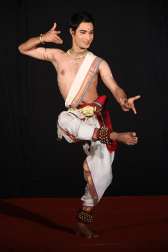 A dynamic exponent of Kuchipudi, Avijit has studied with Guru Vempati Chinna Satyam and, later, Jaikishore Mosalikanti (who performed at Erasing Borders 2012), after completing a diploma in Bharatanatyam from the renowned Kalakshetra academy in Chennai. Sought after as teacher and choreographer he is known for his exquisite style as he explores modern interpretations of Indian dance. This is his US Debut. A dynamic exponent of Kuchipudi, Avijit has studied with Guru Vempati Chinna Satyam and, later, Jaikishore Mosalikanti (who performed at Erasing Borders 2012), after completing a diploma in Bharatanatyam from the renowned Kalakshetra academy in Chennai. Sought after as teacher and choreographer he is known for his exquisite style as he explores modern interpretations of Indian dance. This is his US Debut.Will perform: "Dashavataram" and "Tarangam" Photo credit: Vishant |
|
| Dashavatara Shabdam 'verses on ten incarnations' describe in brief the exploits of the terrestrial forms assumed by Lord Vishnu to save humanity from a specific titan who endangered them: FISH (who delved into the waters of the flood to rescue the stolen vedas; TURTLE who bore the world on its back; BOAR who rescued the abducted goddess earth on his tusks; MAN-LION who tore-apart the arrogant King Hiranyakashipu; diminutive BRAHMIN who crushed the overbearing King Mahabali underfoot; BRAHMIN-AVENGER who waged war on the arrogant warrior caste; lord RAMA who defeated the ten-head King Ravana and rescued his abducted wife; BALARAMA, who helped his brother Lord Krishna defeat the bully King KAMSA ; BUDDHA who brought a radiance to the world; and, finally, KALKI, avenging warrior on a horse who destroys all evil and is harbinger of a new Cosmic Age. | |
| Tarangam 'waves of song' is popularly called "the plate dance" since, in it, the dancer uses the raised edges of a brass tray to tap out complicated rhythm responses to the percussion language (chollu) of the mridang player. The dance, based on the song from the Sanskrit opera, Krishna Leela Tarangini by Telugu poet, NarayanaTirtha (c. 1650-1745), rejoices in Krishna dancing - and at the end refers specifically to specific various feet positions used by the child. | |
| CAROLINA PRADA (Mayurbhanj Chhau) | |
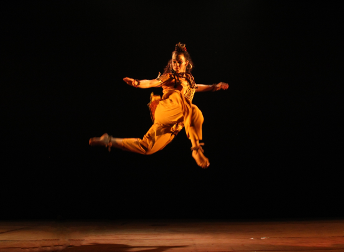 The only female soloist of this generation to research, choreograph and perform professionally in Mayurbhanj Chhau, Carolina has helped promote this art with her Guru, Janmejoy Sai Babu (father of Rakesh Sai Babu who was part of Erasing Borders 2015). A Choreographer as well as exponent of Odissi, she has performed to great acclaim at reputed festivals in India and now makes her US debut. The only female soloist of this generation to research, choreograph and perform professionally in Mayurbhanj Chhau, Carolina has helped promote this art with her Guru, Janmejoy Sai Babu (father of Rakesh Sai Babu who was part of Erasing Borders 2015). A Choreographer as well as exponent of Odissi, she has performed to great acclaim at reputed festivals in India and now makes her US debut.Will perform: "Ardhanarishwar" Photo credit: Sergio Bermejo Alonso |
|
| Ardhanareeshwar('divinity who is half-woman') celebrates the interplay of feminine and masculine energies of the universe, embodied as a single entity. The choreography and music explore the dynamics between tandava (vigorous) and lasya (sensuous), lyrical meaning and martial vocabulary. The composition is a result of shared intentions of her male guru and female self to extend the possibilities of the Mayurbhanj style of Chhau. | |
| SURABHI BHARADWAJ (Bharatnatyam) | |
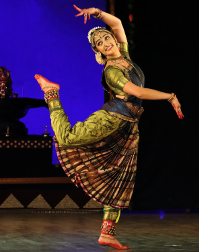 A seasoned dancer trained by eminent gurus - K M Raman, Radha Sridhar, B Banumati and Dr. Padma Subrahmanyam, Surabhi is also trained in Yoga and Kalaripayattu (Indian Martial Art). She is the Founder of Siddhi Dance Academy and Yokayam and has also toured the US as a dancer in two of Radha Kalpa productions of Rukmini Vijaykumar (Erasing Borders artist - 2012). A seasoned dancer trained by eminent gurus - K M Raman, Radha Sridhar, B Banumati and Dr. Padma Subrahmanyam, Surabhi is also trained in Yoga and Kalaripayattu (Indian Martial Art). She is the Founder of Siddhi Dance Academy and Yokayam and has also toured the US as a dancer in two of Radha Kalpa productions of Rukmini Vijaykumar (Erasing Borders artist - 2012).Will perform: "Aadu Pambe" Photo credit: Sampath Kumar |
|
| Aadu Pambe 'dance, o snake' refers to Nagaraja, the snake who adorns Lord Shiva and whose gentle motion expresses the helix-shaped channels through which energy rises in the body, human and cosmic, and the saint-composer is said to have attained great spiritual power from his practice of yoga. New York city has a long association with earlier imagined versions of this dance, as performed by Ruth St. Denis in 1906 in the Hudson theatre, to filmed versions danced by the star ‘Baby Kamala' now residing in Long Island, and Bhaskar Roy Chowdhury's acrobatic, yogic version of the snake dance at Radio City Hall (in the 60s) and multiple spin-off oriental versions of snake dances on the web. |
|
| SOORAJ SUBRAMANIAM (Odissi) | |
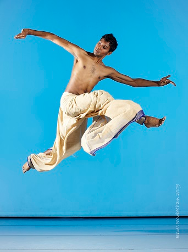 Born in Malaysia, Sooraj began his training in Odissi and Bharatanatyam with Ramli Ibrahim at Sutra Dance Theatre going on to study ballet and contemporary dance and also co-direct Mudhra Dance in Australia. In London he worked with major dance companies (Nina Rajarani's Sristhi, Shobana Jeyasingh Dance) and studied Kathak with Urja Desai. He lives in Belgium working as a freelancer. Born in Malaysia, Sooraj began his training in Odissi and Bharatanatyam with Ramli Ibrahim at Sutra Dance Theatre going on to study ballet and contemporary dance and also co-direct Mudhra Dance in Australia. In London he worked with major dance companies (Nina Rajarani's Sristhi, Shobana Jeyasingh Dance) and studied Kathak with Urja Desai. He lives in Belgium working as a freelancer.Will perform: "Sthai" Photo credit: James Rowbotham Dance Photography |
|
| Sthai is woven around a garland of abstract rhythmic syllables set to a simple melody and presents the foundation of the Odissi movement vocabulary. This composition is interspersed by verses from the Shilpa Sastra treatise on temple sculpture which describe a range of poses: of maidens in languorous, indolent poses (alasal kanya) or of musicians playing traditional instruments. | |
| KRISHAN MOHAN MISHRA (Kathak) | |
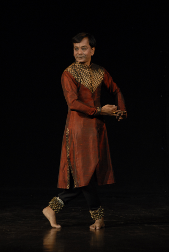 Born to a family of hereditary dancers, Pt. Krishan Mohan Maharaj - the eldest son of Padmashri Shambhu Maharaj - belongs to the illustrious Kalka Bindadin Gharana of Lucknow of which his elder brother Birju Maharaj is a stellar member. A talented soloist he is also a gifted percussionist on the tabla, pakhawaj and various folk drums and choreographer of several productions that have toured internationally. Born to a family of hereditary dancers, Pt. Krishan Mohan Maharaj - the eldest son of Padmashri Shambhu Maharaj - belongs to the illustrious Kalka Bindadin Gharana of Lucknow of which his elder brother Birju Maharaj is a stellar member. A talented soloist he is also a gifted percussionist on the tabla, pakhawaj and various folk drums and choreographer of several productions that have toured internationally.Will perform: "Improvisations to LIVE music" Photo credit: Ashwini chopra |
|
| Traditional, improvised, Kathak | |
| We are pleased to revert in this part of our festival program to the traditional informal and personal Kathak concert format, where the performer presents parts of his repertory selected sometimes spontaneously in response to the audience. His repertory is based on a stream of constantly evolving versions of earlier dances of the Lucknow gharana (or heritage, tradition) of Kathak. | |
| SUMEET NAGDEV DANCE ARTS (Contemporary) | |
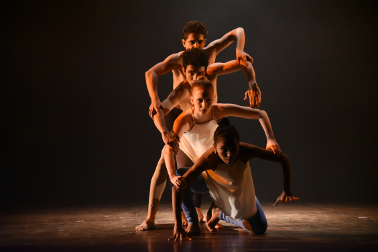 Founded in 2007, by Sumeet Nagdev, the company has so far performed 250 shows, the most noteworthy being at Mumbai's Kala Ghoda Festival, Seattle International Dance Festival and for major corporations in India. International Choreographer at the American Dance Festival in 2012, Sumeet has created fourteen productions that have toured India, Europe and the US and even made forays into Bollywood. Founded in 2007, by Sumeet Nagdev, the company has so far performed 250 shows, the most noteworthy being at Mumbai's Kala Ghoda Festival, Seattle International Dance Festival and for major corporations in India. International Choreographer at the American Dance Festival in 2012, Sumeet has created fourteen productions that have toured India, Europe and the US and even made forays into Bollywood. Dancers: Melanie Testa, Tejaswee Arvind Sontakke, Neeraj and Kiran Dinkar Shenvi. Will perform: "Dhrut" Photo credit: Teamwork Arts |
|
| Dhrut 'fast tempo' is usually the concluding section of a traditional Hindustani music recital. Here the choreographer delves into concepts of time dilation and of going backwards and forwards in time to explore the intricate relationship between past, present and future. Through a seamless synchronisation between rapid movement vocabulary and rhythm, the work highlights the impact of time on each body, until it culminates in an emulsion of the three. | |
| BATTERY DANCE COMPANY (Contemporary) | |
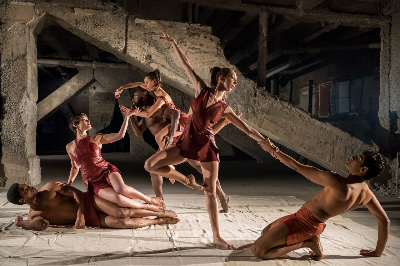 An integral part of the fabric of New York City for 40 years, Battery Dance has produced nearly 100 original dance works choreographed by its founder and artistic director Jonathan Hollander, in collaboration with a diverse array of composers and designers, and its cast of outstanding dancers. Battery Dance Company has presented works in more than 60 countries on 5 continents. An integral part of the fabric of New York City for 40 years, Battery Dance has produced nearly 100 original dance works choreographed by its founder and artistic director Jonathan Hollander, in collaboration with a diverse array of composers and designers, and its cast of outstanding dancers. Battery Dance Company has presented works in more than 60 countries on 5 continents. Dancers: Robin Cantrell, Mira Cook, Clement Mensah, Bethany Mitchell, Sean Scantlebury, Unnath H.R. Will perform: "The Durga Project" Photo credit: Darial Sneed |
|
| The Durga Project is inspired by Durga, the ‘Hindu Goddess’ exemplifying the dualities of destruction and creation and the force of creativity. Durga is also the name of a raga that is rich and compelling in its cadence. Steeped in both traditions of Western and Indian dance and music, Jonathan Hollander led his team in this collaborative piece of choreography. | |